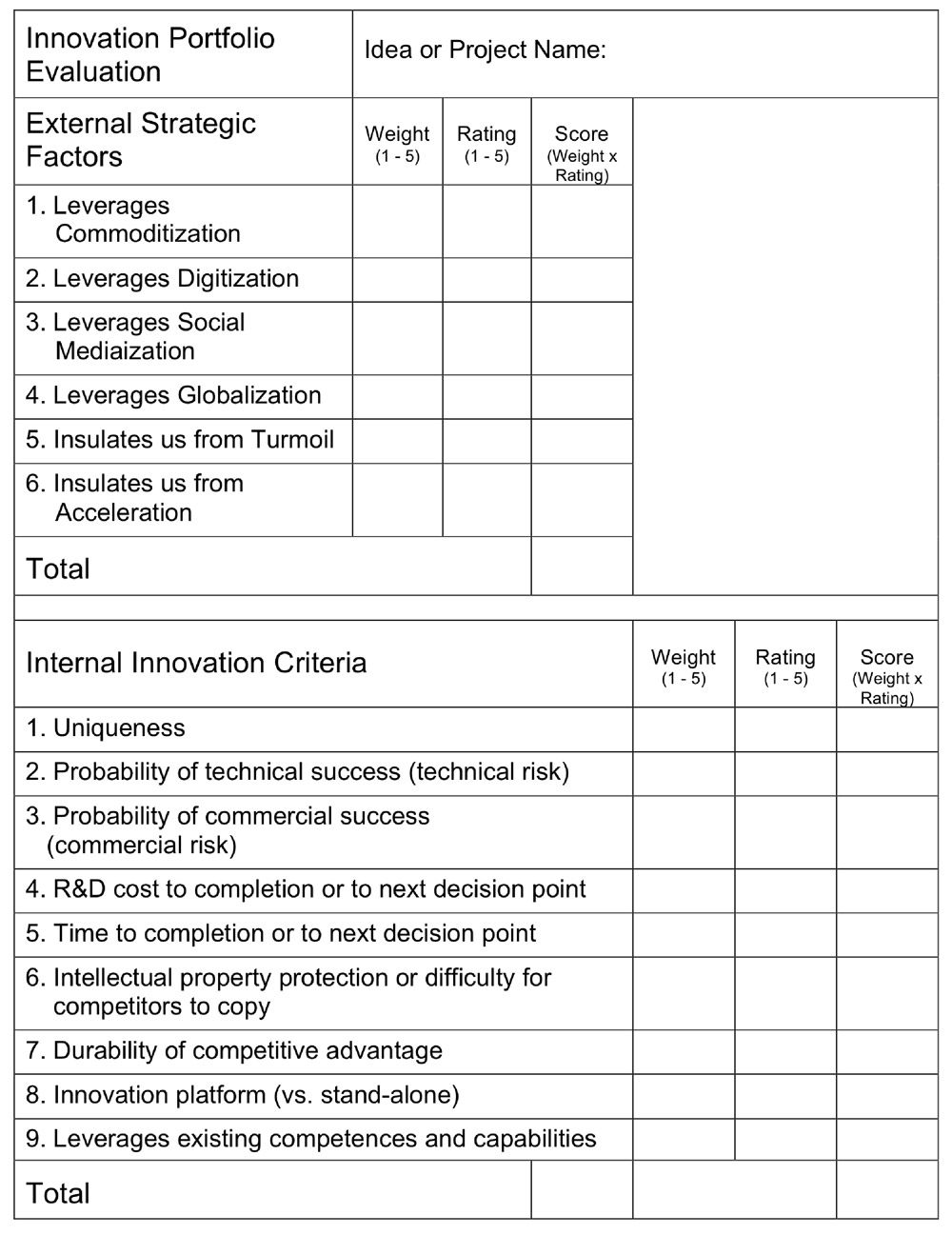To design the ideal innovation portfolio you begin with the strategic perspective, looking at the driving forces of change that are most relevant to your own organization, defining your future goals, vision and strategic intent, as we see that the purpose of the portfolio is to pursue them systematically despite the uncertain world, and to find the right balance between investment risk and innovation output.
So now let’s put the principles and concepts we’ve been discussing into action. We’ve defined a simple process for portfolio management consisting of only 127 steps, which will enable you to do this.
Oh, no, that’s not right. Happily, there are only 8 steps…
Step 1: Determine the Burn Down rate of your existing revenue and profit streams, the rate at which current products and services are becoming obsolete;
Step 2: Determine the Growth Goals for revenue, profit, and ROI for your portfolio;
Step 3: Model the Key Strategic Factors in your industry (an application of the themes explored in chapters 1 and 2);
Step 4: Set the overall Strategic Direction for the organization;
Step 5: Define the Characteristics or Criteria to be considered in evaluating ideas;
Step 6: Define the Weighting of the characteristics and score ideas for attractiveness;
Step 7: Determine Risk-Reward Profile and design the ideal Innovation Portfolio;
Step 8: Assess proposed New Projects and choose your investments.
Once you’ve chosen which projects to invest in, you’ll manage them, continuing to learn as you develop new products and services that become the innovations.
Since you’re going to design your portfolio, you’ll also design the criteria according to which you’re going to assess its performance. What you measure in business has decisive impact on what your organization delivers, so as you proceed you’ll need to think about what you really do need to measure. The topic of metrics will be taken up in detail in Chapter 6, where I’ll discuss possibilities you may want to use in assessing your portfolio’s performance.
Think of your innovation portfolio as a tool to help you manage risk and get the best possible return for the capital you have to invest. It has to be designed thoughtfully, with due consideration for the strategic factors that are driving your business and your industry forward. Taken together, the projects that you select are the ones you believe most likely to enable you to achieve your strategic goals, to compete effectively and create competitive advantage, to grow your business, to sustain your success.
Implementation of the portfolio occurs throughout the subsequent stages of the innovation process, which means that it will take some time before you know if the portfolio you designed actually delivers the value you intended.
The Innovation Portfolio Evaluation Form, part of the innovation management toolkit.
Over time, as you manage toward this ideal portfolio, your team’s ability to assess individual projects will improve, and the capacity to create value through the entire process will improve as well. As the projects that constitute an innovation portfolio mature they will provide senior executives and board level directors with increasingly attractive new investment options, and thus a welcome (and expected) return on the invested efforts and funds.
About the author:
 Langdon Morris is a co-founder of InnovationLabs LLC, one of the world’s leading innovation consultancies.
Langdon Morris is a co-founder of InnovationLabs LLC, one of the world’s leading innovation consultancies.
Langdon is also a Contributing Editor and Writer of Innovation Management, Associate Editor of the International Journal of Innovation Science, a member of the Scientific Committee of Business Digest, Paris, and Editor of the Aerospace Technology Working Group Innovation Series.
He is author, co-author, or editor of eight books on innovation and strategy, and a frequent speaker at innovation conferences worldwide. He has lectured at universities on 4 continents.
The Innovation Master Plan: The CEO’s Guide to Innovation is now available at Amazon.com.








